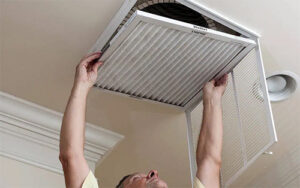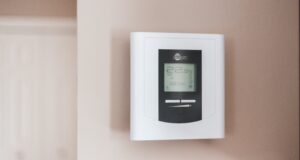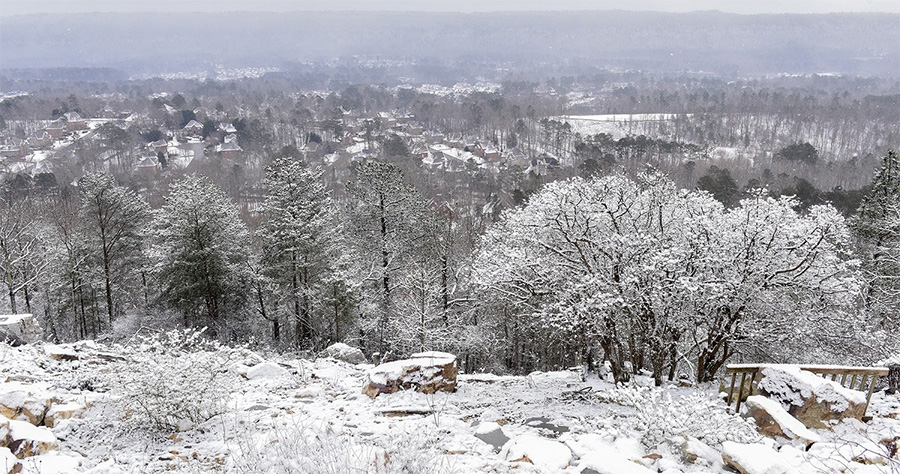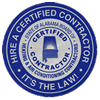You know how Alabama winter storms go. The forecast shows up 72 hours out, everyone hits the grocery store for bread and milk, and then we either get walloped with ice or watch it miss us entirely. But here’s what most Decatur homeowners don’t think about until it’s too late: your heating system breaking down at 2 AM when it’s 18 degrees outside and the roads are sheets of ice.
At Southeastern Mechanical Services, we get slammed with emergency calls during every winter weather event. And honestly? About half of those emergencies could have been prevented with some basic preparation in the 72 hours before the storm hits.
The Federal Emergency Management Agency (FEMA) and the Alabama Emergency Management Agency both emphasize the importance of preparing your home before winter weather strikes. Let’s make sure your heating system doesn’t fail you when you need it most.
72 Hours Before: The Early Warning Window
When you first see that winter storm watch pop up for North Alabama, most people start thinking about flashlights and canned soup. Smart. But this is also when you need to think about your heating system, because there’s still time to address problems before they become emergencies.
Check Your Thermostat Batteries
Dead simple, but we see it constantly. Your thermostat loses power during an outage, batteries die, and suddenly your heating system won’t restart even after power comes back. Takes two minutes to replace them now.
Test Your Heating System
Turn your heat up to 75 and let it run for 20 minutes. Listen for unusual noises. Feel the air coming from vents. If something seems off (weak airflow, strange smells, inconsistent heating), call for service now while technicians are still available.
Locate Your Emergency Shutoffs
Know where your electrical panel is and which breaker controls your HVAC. Know where the gas shutoff is if you have a gas furnace. In an emergency, you need to find these in the dark without fumbling around.
Clear the Area Around Your Outdoor Unit
Move anything that could blow into your heat pump during high winds. Patio furniture, trash cans, branches, whatever. Alabama winter storms often bring strong winds before the precipitation starts.
48 Hours Before: Getting Serious
The forecast is getting clearer now, and if they’re talking about ice or heavy snow for Decatur, it’s time to take more decisive action.
Change Your Air Filter
 A clean filter is crucial when your system will be running constantly for days. Reduced airflow during extreme cold forces your system to work way harder, and that’s when failures happen. If your filter looks dirty, replace it now.
A clean filter is crucial when your system will be running constantly for days. Reduced airflow during extreme cold forces your system to work way harder, and that’s when failures happen. If your filter looks dirty, replace it now.
Check Your Outdoor Unit
Look for ice or snow already building up around the unit. Clear the area. Make sure the unit is level (settling happens in our red clay soil). Check that nothing is blocking airflow around all sides of the unit.
Inspect Visible Ductwork
If you have accessible ductwork in your basement, crawlspace, or attic, look for obvious problems. Disconnected sections, damaged insulation, visible gaps. You’re not going to fix major problems in 48 hours, but you can at least know what you’re dealing with.
Test Your Backup Heat (If Applicable)
Many heat pumps have electric backup heat strips. These kick in automatically when it gets really cold. Turn your thermostat to “Emergency Heat” mode for 15 minutes to make sure this backup system works. Then switch it back to normal heating mode.
Stock Up on Supplies
According to Ready.gov, your emergency kit should include flashlights, batteries, blankets, and non-perishable food. But also think about HVAC-specific items: extra furnace filters, a working flashlight for checking your equipment, and our phone number (256-686-3444) saved in your phone.
24 Hours Before: Last Chance Preparations
The storm is coming tomorrow. The Alabama EMA is probably issuing advisories. This is your last window to address anything you’ve been putting off.
Set Your Thermostat Strategically

Pre-Heat Your Home
If power outages are likely, get your home up to 72-74 degrees before the storm hits. A well-insulated house will hold heat for hours. It’s like charging a battery before the power goes out.
Protect Exposed Pipes
Wrap any exposed pipes, especially near your outdoor HVAC unit. Frozen condensate lines can shut down your system. In crawlspaces or unheated areas, open cabinet doors to let warm air circulate around plumbing.
Clear Your Outdoor Unit of Ice and Snow
If precipitation has already started, gently brush off any accumulation on your outdoor unit. Don’t use sharp tools that could damage fins. Don’t pour hot water on it (thermal shock can crack components).
Charge Your Devices
Make sure your phone is fully charged. If you need to call for emergency service during the storm, a dead phone doesn’t help anyone. Consider charging a backup battery pack too.
During the Storm: Active Monitoring
The storm has arrived. Roads are bad. You’re staying home like the Alabama Emergency Management Agency recommended. Now what?
Monitor Your System Performance
- Check that warm air is consistently flowing from vents
- Listen for unusual sounds (grinding, squealing, banging)
- Watch your outdoor unit for excessive ice buildup
- Note if your system is running constantly without cycling off
Keep Snow and Ice Clear
Every few hours (safely, during daylight, without risking falls on ice), check your outdoor unit. Heat pumps need airflow to work. If snow is piling up around or on the unit, carefully clear it away. Use a broom, not a shovel, to avoid damaging components.
Don’t Panic If Your Heat Pump Runs Constantly
During extreme cold, it’s actually normal for heat pumps to run continuously. This doesn’t necessarily mean something is wrong. What’s not normal: no warm air, ice completely covering the unit, or strange noises.
Know When to Call for Help
Call immediately if you experience cold air blowing from vents, complete system shutdown, burning smells, or excessive ice buildup that won’t clear. Don’t wait until your house hits 50 degrees to call.
The Emergency Heat Reality
Let’s talk about “Emergency Heat” mode on your thermostat. This bypasses your heat pump and runs only the electric backup strips. These work great, but they cost significantly more to operate.
When to use Emergency Heat:
- Your heat pump has completely failed
- The outdoor unit is encased in ice and can’t be cleared
- You’re getting no heat at all in normal mode
When NOT to use it: as your default winter setting just because it’s cold outside. Your heat pump should handle most Alabama cold snaps just fine.
Post-Storm: Damage Assessment
The storm has passed, power is back, roads are clearing. Before you assume everything is fine, do a quick system check.
Visual Inspection
- Check for obvious damage to the outdoor unit
- Look for bent fins or panels
- Inspect refrigerant lines for damage
- Check that the unit is still level on its pad
Performance Check
- Does the system return to normal operation?
- Is airflow strong and consistent?
- Are all areas of your home heating properly?
If anything seems off, schedule a service call. Storm damage often doesn’t show up as immediate failure, but as reduced efficiency or pending component failure.
What If You Lose Heat During the Storm?
Okay, worst case scenario. It’s the middle of an ice storm, and your heat goes out. Here’s your emergency protocol:
Immediate Steps:
- Check your thermostat and breaker first (seriously, we’ve driven through ice storms for tripped breakers)
- Try switching to Emergency Heat mode
- Close off unused rooms and focus on heating one area
- Use your fireplace if you have one (but ensure the damper works and carbon monoxide detectors are functioning)
- Call us at 256-686-3444 – we prioritize no-heat emergencies during storms
Safety Warnings from FEMA:
The U.S. Fire Administration notes that home heating is the second leading cause of home fires. Never use a gas stove or oven to heat your home. Space heaters need at least 3 feet of clearance from anything flammable. Never leave space heaters unattended.
Why Professional Pre-Storm Service Matters
Look, we get it. Nobody wants to pay for a service call when nothing is “broken.” But here’s what a pre-storm HVAC check can catch: failing components that haven’t quit yet, refrigerant leaks reducing efficiency, electrical connections starting to corrode, and ductwork issues limiting airflow.
Finding these problems before a storm means fixing them on your schedule, not during an emergency when service calls are expensive and technicians are slammed.
Trust Local Experts Who Understand Alabama Winters
At Southeastern Mechanical Services, we’ve been through enough North Alabama winter storms to know what fails and why. Our technicians can spot the warning signs that homeowners miss and fix problems before they become emergencies.
Don’t wait until the forecast shows ice arriving in 12 hours to think about your heating system. When you see that first winter storm watch, give us a call at 256-686-3444 or contact SMS here. We’ll make sure your system is ready to handle whatever Alabama winter throws at us.
Because the middle of an ice storm, when it’s 20 degrees outside and repair trucks can’t get down your street, is absolutely the worst time to discover your heat doesn’t work.








